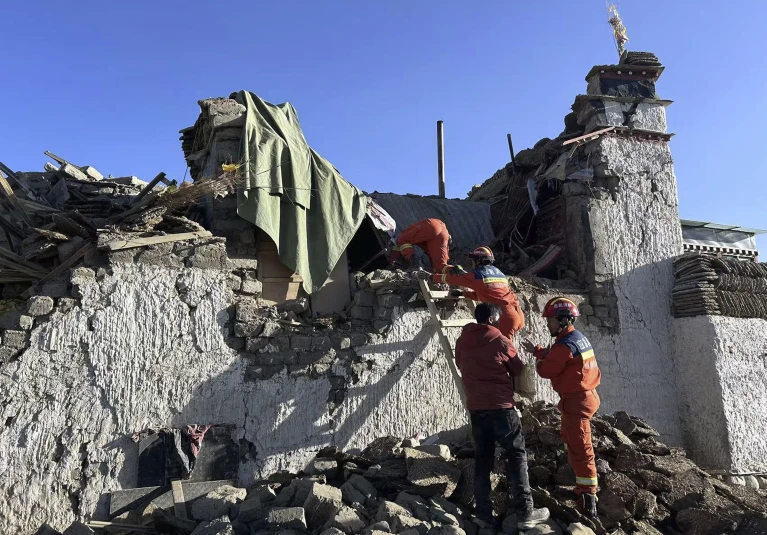Relocation of Survivors Underway
Relief teams in western China shifted focus on Wednesday to resettling survivors after a powerful earthquake struck near Shigatse, Tibet, a day earlier. More than 46,000 people have been relocated following the disaster, which left 126 dead and 188 injured. Survivors are receiving essential supplies, including tents, quilts, and stoves, to cope with the region’s harsh climate.
Tibetan Vigils Held in India and Nepal
Tibetan communities in India and Nepal held vigils for victims of the earthquake. In Dharamshala, India, about 200 Tibetans lit candles, marched, and chanted prayers in solidarity with the victims. The city is home to the Dalai Lama, Tibetan Buddhism’s highest figure, who fled Tibet in 1959 during an uprising against Chinese rule. The Dalai Lama announced a prayer ceremony for the victims, to be held on Thursday.
In Kathmandu, Nepal, around 50 Tibetans gathered at a Buddhist monastery to offer prayers for the victims. “We are praying for the souls of the so many people who lost their lives in Tibet because of the earthquake,” said Riya Tamang, a shop owner in the area.
Details of the Earthquake
The 7.1 magnitude earthquake struck an outlying county in Shigatse, about 25 kilometers (15 miles) from the main city. 500 aftershocks followed the initial quake, which impacted areas as far as Mount Everest and the Nepalese border. China’s earthquake center reported a magnitude of 6.8.
The disaster caused extensive destruction, with more than 3,600 houses collapsing, according to preliminary surveys. The Gurum village in Shigatse reported 22 fatalities out of its 222 residents, including elderly and children who were unable to escape.
Chinese Government’s Response
State broadcaster CCTV showed relief workers erecting insulated tents to protect survivors from freezing overnight temperatures, as the region averages an altitude of 4,200 meters (13,800 feet). Vice Premier Zhang Guoqing called for accelerated reconstruction to ensure survivors remain safe and warm through winter.
Relief efforts have transitioned from search and rescue to resettlement and rebuilding, according to Tibet’s Emergency Management Department.
Political Tensions Amid Humanitarian Crisis
The disaster underscored tensions between China and Tibetan communities. Chinese authorities expressed confidence in the Communist Party’s ability to rebuild the affected areas, while Tibetan leaders, including the Dalai Lama, highlighted solidarity and spiritual support for the victims.
Foreign journalists remain largely restricted in Tibet due to ongoing concerns over alleged human rights abuses by Chinese authorities.


